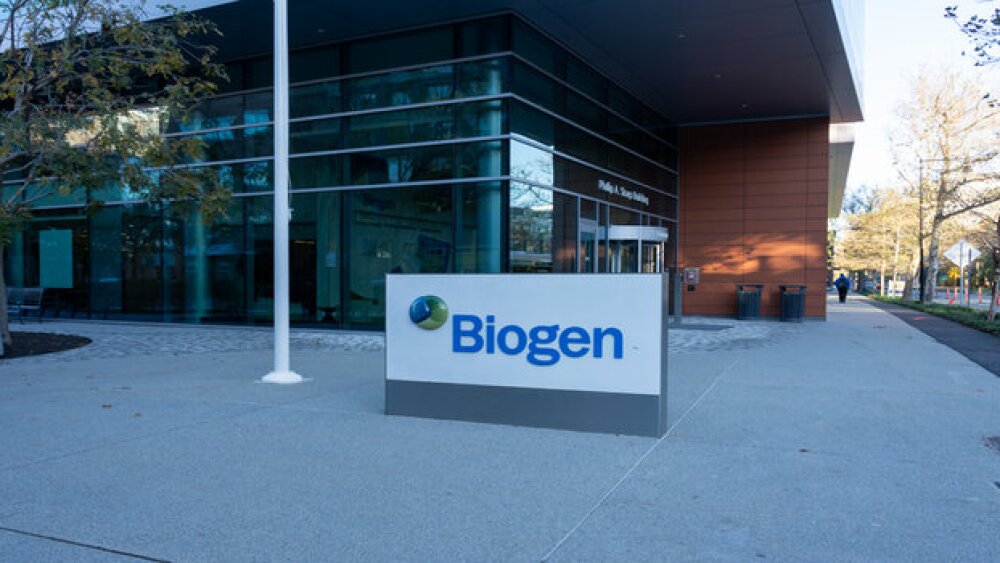There are plenty of great scientific research stories out this week. Here’s a look at just a few of them.
There are plenty of great scientific research stories out this week. Here’s a look at just a few of them.
RNA Splicing Events Associated with Alzheimer’s Progression
Researchers at the Icahn School of Medicine at Mount Sinai and Columbia University, performing large-scale analysis of RNA from postmortem human brain tissue, identified specific RNA splicing events linked to Alzheimer’s disease progress. They published their work in the journal Nature Genetics.
They analyzed the mRNA splicing in the dorsolateral prefrontal cortex (DLPFC) of 450 patients with two aging cohorts. They identified hundreds of “aberrant pre-mRNA splicing events” associated with Alzheimer’s and created a catalog of splicing quantitative trait loci (sQTL) effects, noting that, “splicing of 3,006 genes is influenced by genetic variation.”
RNA splicing removes non-coding sequences or genes from RNA precursors, bringing together the protein-coding sequences. This results in multiple protein variants encoded by a single gene. Problems in splicing regulation have previously been associated with amyotrophic lateral sclerosis (ALS) and autism.
“Most importantly, these new insights into genetic mechanisms in the aging brain will help offer new strategies and directions for RNA-targeted biomarkers and therapeutic intervention in Alzheimer’s disease,” stated Towfique Raj, assistant professor in the Ronald M. Loeb Center for Alzheimer’s Disease at Mount Sinai, first and co-corresponding author of the study.
Possible New Drug for Subtype of Triple-Negative Breast Cancer
Triple-negative breast cancer is a type that doesn’t express estrogen receptor alpha, progesterone receptor, and human epidermal growth factor receptor 2, or HER2. Researchers at Mayo Clinic have identified the drug estradiol as a possible treatment for a subset of triple-negative breast cancer. They published their research in the Proceedings of the National Academy of Sciences.
In earlier work, the research team, led by John Hawse, a molecular biologist at Mayo Clinic and senior author of the study, found that a second form of the estrogen receptor, called estrogen receptor beta, is expressed in about 25 percent of triple-negative breast cancer tumors. In their work, they found that estradiol, a naturally occurring female hormone, inhibits the growth of triple-negative breast cancers that express this estrogen receptor beta.
“Remarkably, we discovered that estradiol, which normally stimulates the growth of cancer cells in tumors that express estrogen receptor alpha, has the opposite effect in triple-negative breast cancer,” Hawse stated. “However, estradiol was only able to inhibit the growth of triple-negative breast cancer when estrogen receptor beta was present.”
The researchers and the Translational Breast Cancer Research Consortium plan to launch a Phase II clinical trial to test the effectiveness of estradiol in this subpopulation of patients.
Using CRISPR to Eliminate Diseases in Prenatal Mice
CRISPR, the gene editing technique that scientists claim will lead to the cure and prevention of countless diseases and disorders, took a big step in that direction. Researchers at Children’s Hospital of Philadelphia used CRISPR to prevent a deadly metabolic disorder in prenatal laboratory animals. Their research was published in the journal Nature Medicine.
The scientists used both CRISPR-Cas9 and base editor 3 (BE3) gene editing to cut cholesterol levels in healthy mice treated in utero. They targeted a gene that regulates those levels, and also used prenatal gene editing to improve liver function and prevent neonatal death in a subgroup of mice. The mice had been engineered with a mutation that caused the lethal liver disease hereditary tyrosinemia type 1 (HT1).
HT1 shows up in humans during infancy and can be treated with nitisinone and a strict diet. But if that fails, patients are at high risk of liver failure or liver cancer.
“Our ultimate goal is to translate the approach used in these proof-of-concept studies to treat severe diseases diagnosed early in pregnancy,” stated William H. Peranteau, the study’s co-leader and a pediatric and fetal surgeon in CHOP’s Center for Fetal Diagnosis and Treatment. “We hope to broaden this strategy to intervene prenatally in congenital disease that currently have no effective treatment for most patients, and result in death or severe complications in infants.”
Detailed Map of the Brain Linked to Alzheimer’s Disease
Researchers at the University of Southern California have used fluorescent tracers and 3-D animation to create the most detailed map of the hippocampus, the part of the brain associated with memory. They published their work in the journal Nature Neuroscience.
“Like a new atlas, we’ve constructed the most detailed diagram of the hippocampus to date,” stated Michael S. Bienkowski, lead author of the study and a researcher at the USC Institute for Neuroimaging and Informatics in the Keck School of Medicine of USC. “With a better map, we can see each region and how it functions. A better map is a resource scientists can use to better understand the hippocampus and how its degeneration leads to diseases.”
The hippocampus stores memories and regulates emotions and guides navigation by spatial processing. In Alzheimer’s disease, it is the first part of the brain affected. Hippocampus degeneration can cause epilepsy and other diseases.
The senior author, Hong-Wei Dong, USC professor of neurology and director of the USC Center for Integrated Connectomics (CIC), speculates that the technique can be used to deliver genetically-targeted drugs to specific neurons, which would result in fewer side effects.
CRISPR Leads to New Alzheimer’s Biomarker
There aren’t many biomarkers for Alzheimer’s disease. One, the ApoE4 gene, isn’t a particularly reliable test for the disease, with positive findings indicating a susceptibility, but not everyone positive will develop the disease. And plenty of people without that biomarker will develop Alzheimer’s. As such, it’s considered a “risk factor.”
Researchers with the Institute of Molecular Pathology Biomarkers at the University of Extremadura in Badajoz, Spain, may have identified a new biomarker. They analyzed cultures of damaged brain tissue that clinically confirmed changes caused by Alzheimer’s, and compared them to normal, healthy tissues in patients of the same age. They identified a deficiency in the protein STIM1 in the Alzheimer’s patients.
“We have been working with this protein for 10 years, but we weren’t expecting these results with sporadic Alzheimer’s,” stated Francisco Javier Martin-Romero, one of the study authors. “We use the CRISPR technique on a regular basis in the Faculty of Sciences at the UEx, as it has the great advantage that the genome remains stable despite the cuts in the DNA. In this specific case, the procedure CRISPR silences the gene which permits the expression of the protein STIM1 in the neuron. Thus, we were able to simulate what occurs in the neuron without this protein, and we observed alterations very similar to those seen in tissues with Alzheimer’s.”
Their next step will be to work with pluripotent stem cells and differentiate them into neurons, for mice and then humans, to create a model. At that point, they can then determine how the absence of stimulus or reduction in STIM1 affects cell aging in sporadic Alzheimer’s disease. Their work was published in the Journal of Molecular Medicine.
UN Panel Warns We Have 12 Years to Limit Climate Change Disaster
It bears repeating. The United Nation’s Intergovernmental Panel on Climate Change (IPCC) released an in-depth report warning that if the world didn’t limit global to 1.5°C in the next 10 to 12 years, the results might be catastrophic and irreversible.
The report had more than 6,000 scientific references, 91 authors and review editors from 40 countries. “One of the key messages that comes out very strongly from this report is that we are already seeing the consequences of 1°C of global warming through more extreme weather, rising sea levels and diminishing Arctic sea ice, among other changes,” stated Panmao Zhai, co-chair of the IPCC Working Group I.
The reports note that limiting global warming to 1.5°C would require “rapid and far-reaching” transitions in land, energy, industry, buildings, transport, and cities. Net human-created emissions of carbon dioxide would need to be reduced by 45 percent by 2030 from 2010 levels, and reach “net zero” around 2050. That would require removing excess carbon dioxide from the air.
The IPCC report was in part made as a result of the Paris Agreement adopted by 195 countries at the 21st Conference of the Parties to the UNFCCC in December 2015. Since taking office, U.S. President Donald Trump has pulled the United States out of the Paris Agreement, although technically the U.S. can’t withdraw until November 5, 2020.
As reported by Business Insider on October 9, President Trump responded to this new report by suggesting “the reports’ authors weren’t more credible than reports that say the environment is ‘fabulous.’” Trump has previously called climate change a “hoax” and in 2012 tweeted that, “The concept of global warming was created by and for the Chinese in order to make U.S. manufacturing non-competitive.”
So let’s repeat: The report had more than 6,000 scientific references, 91 authors and review editors from 40 countries.





